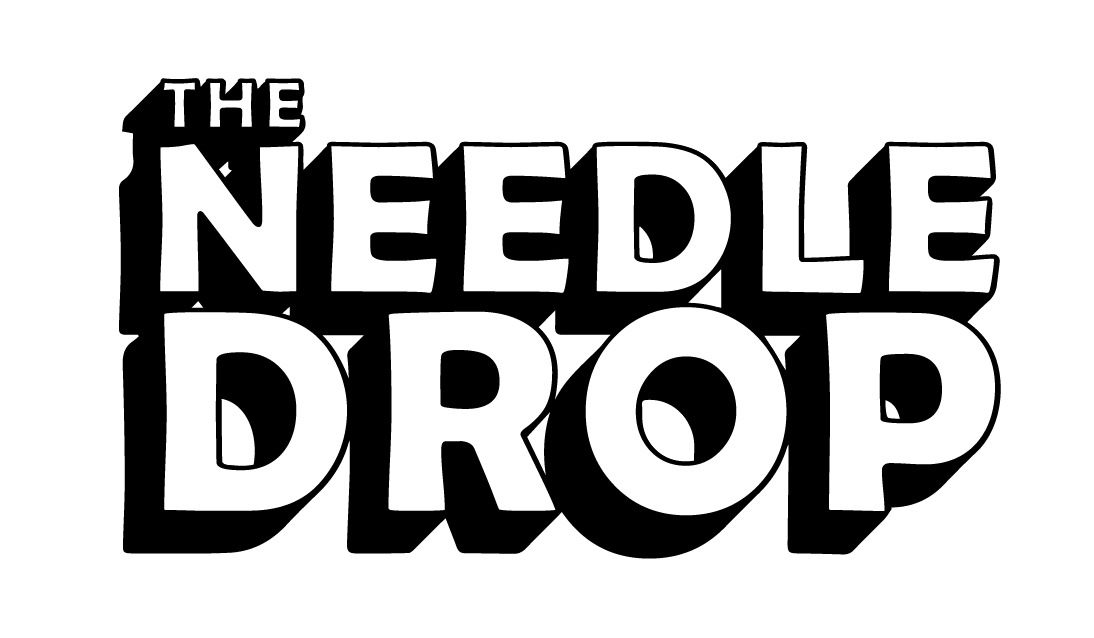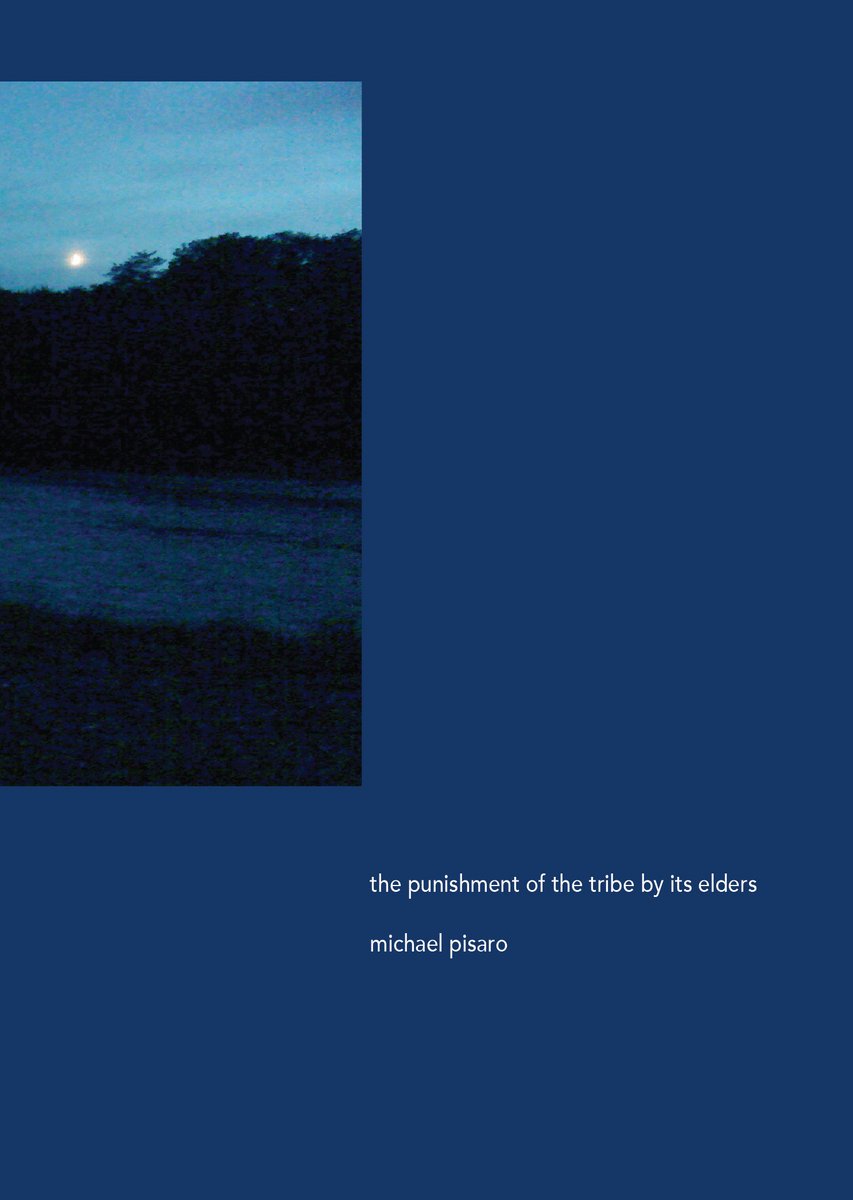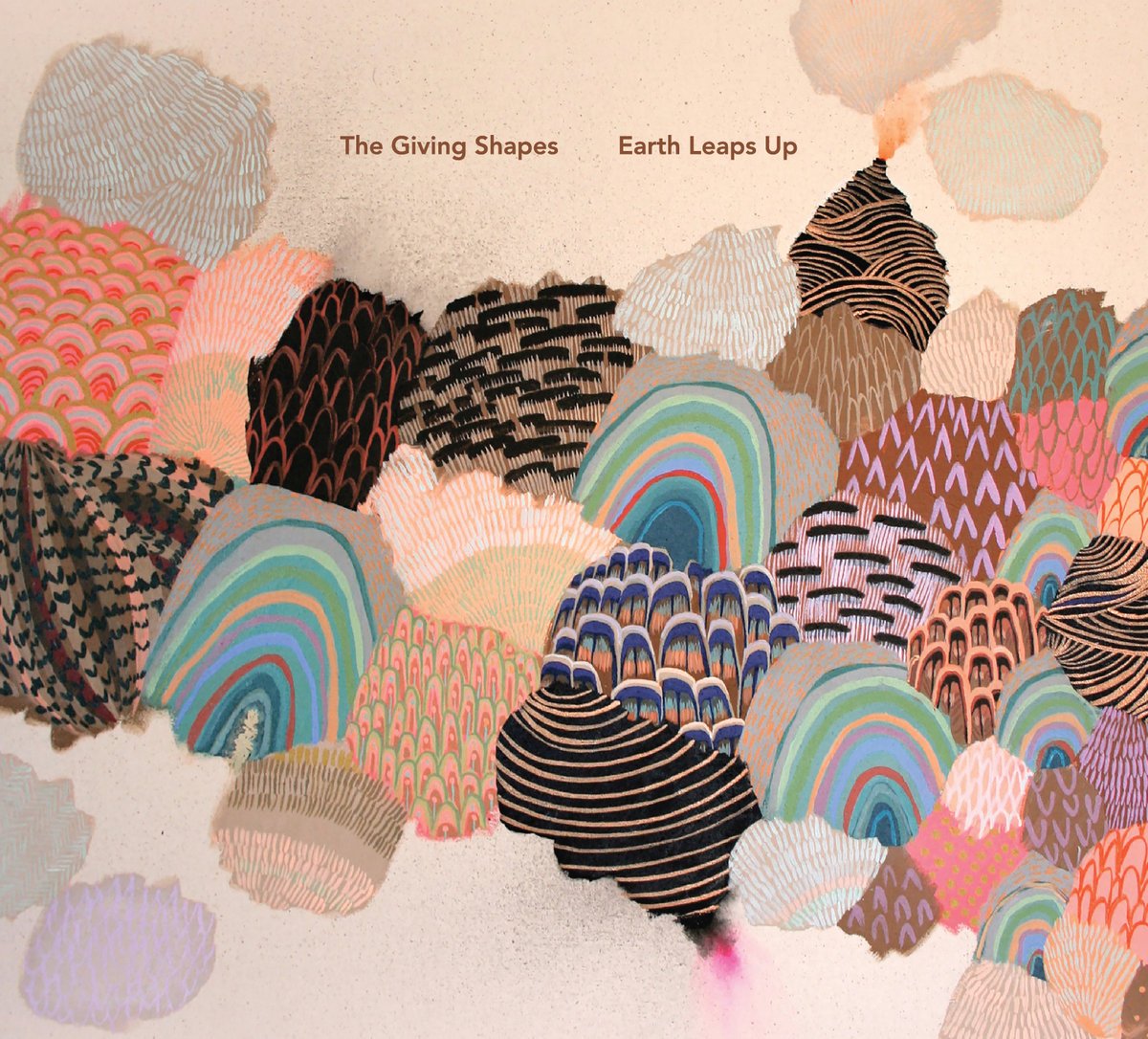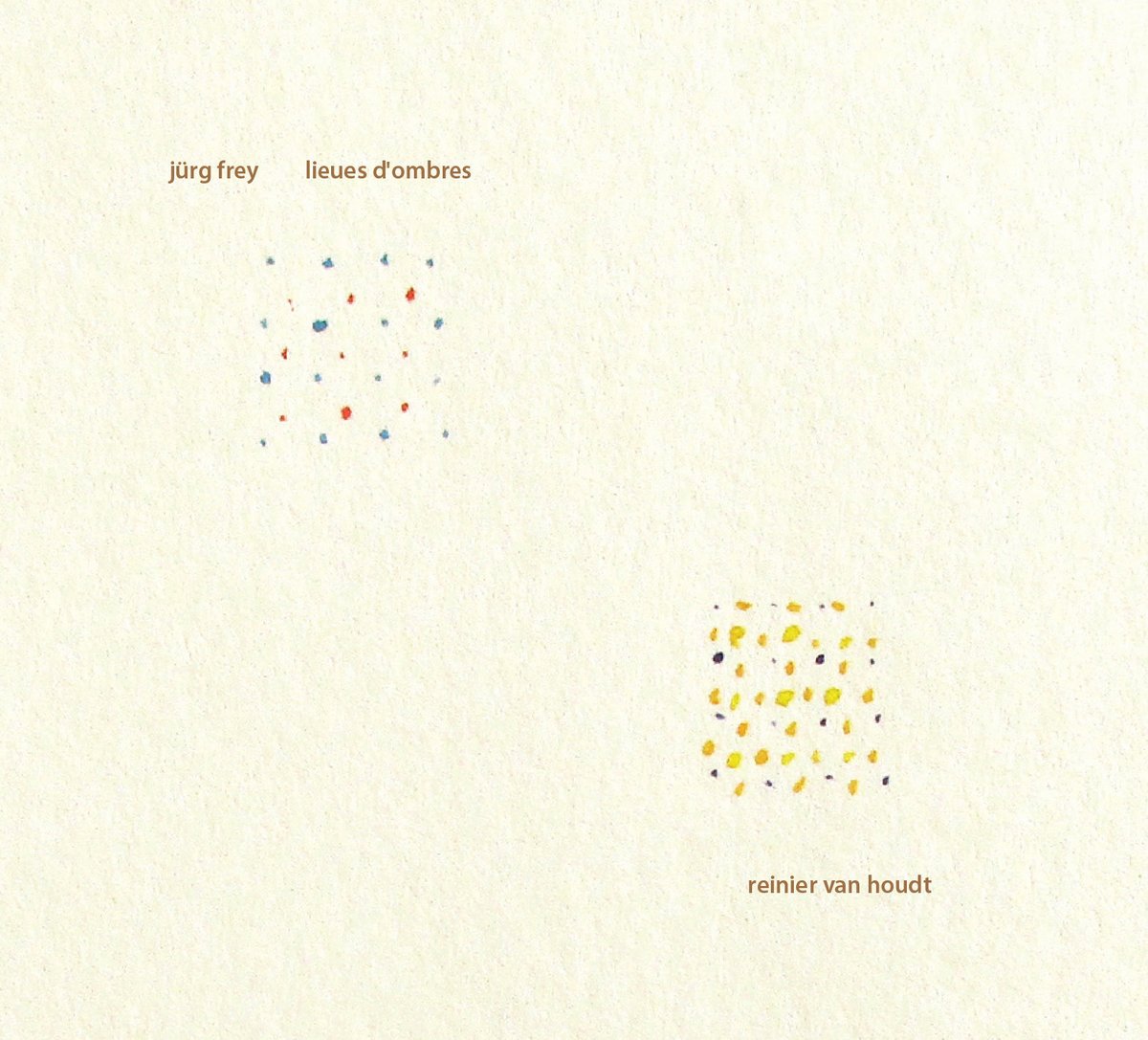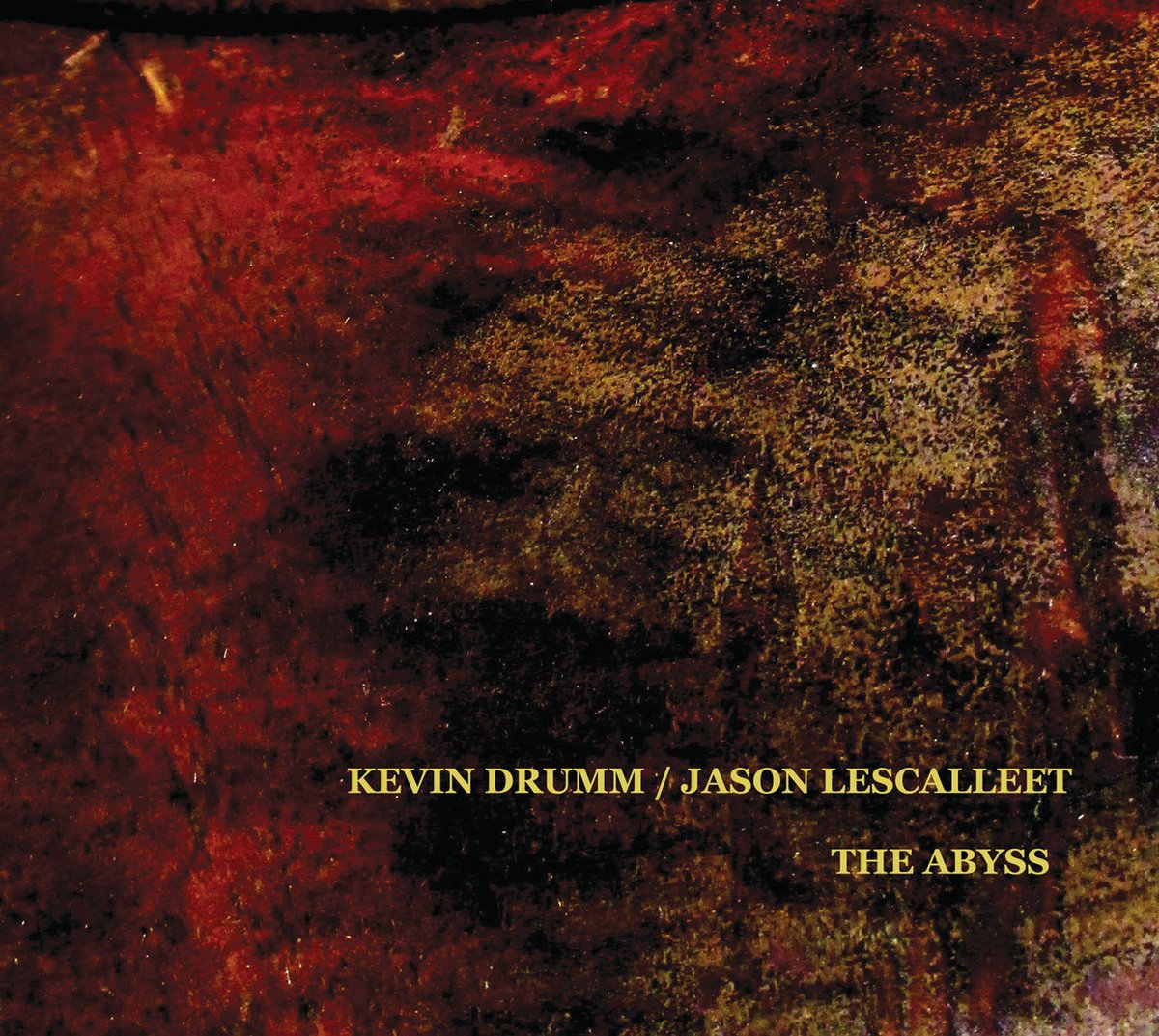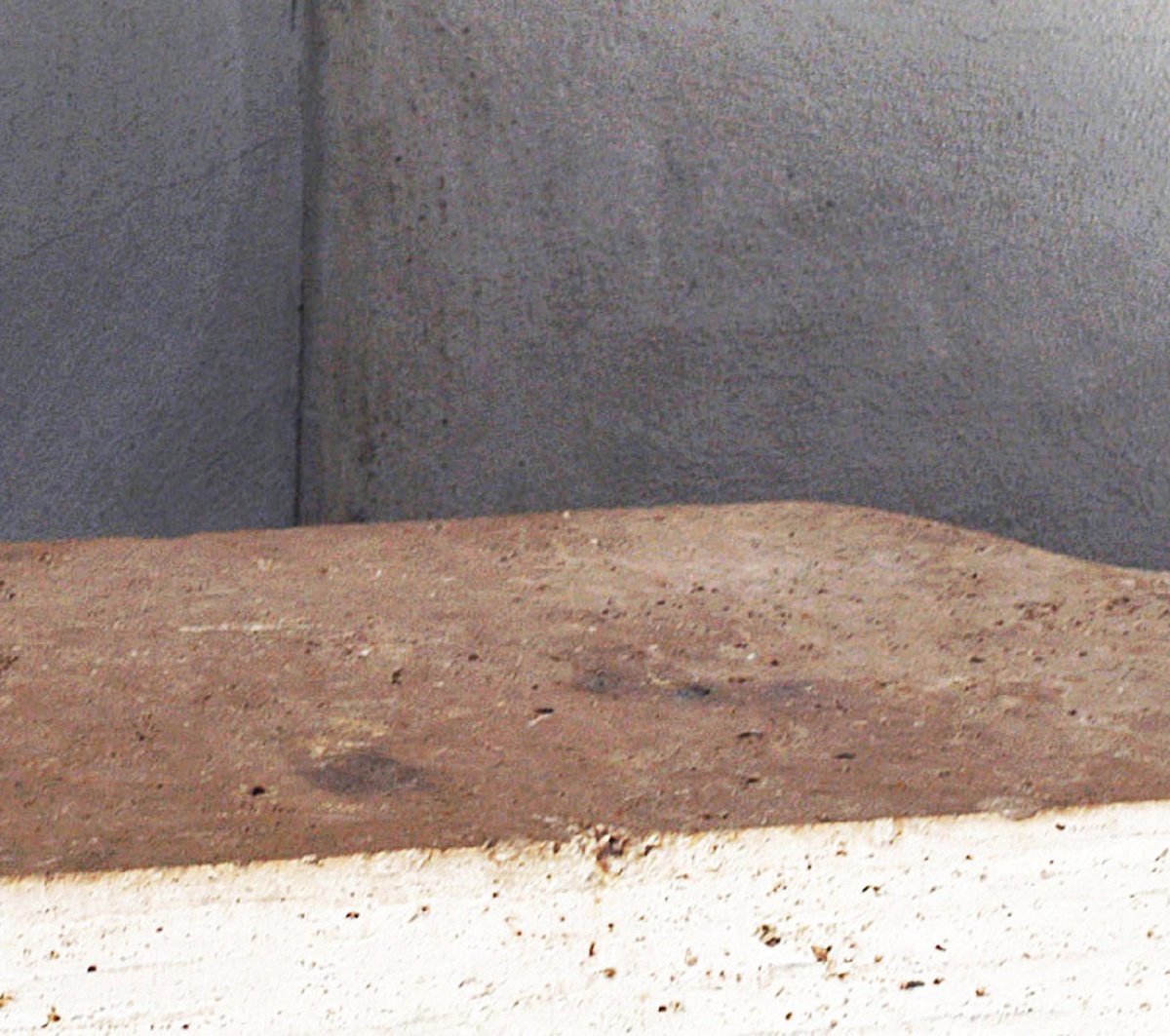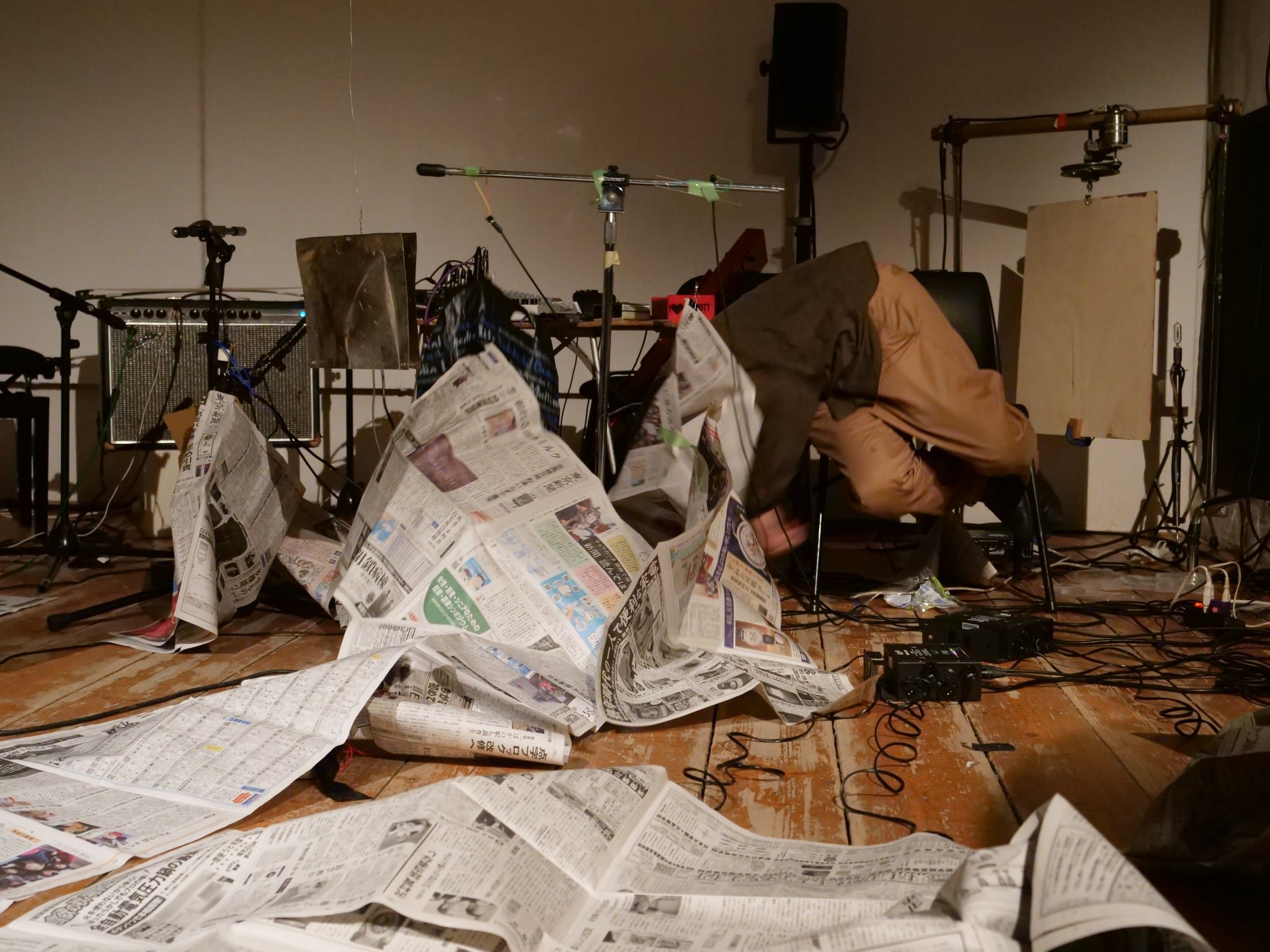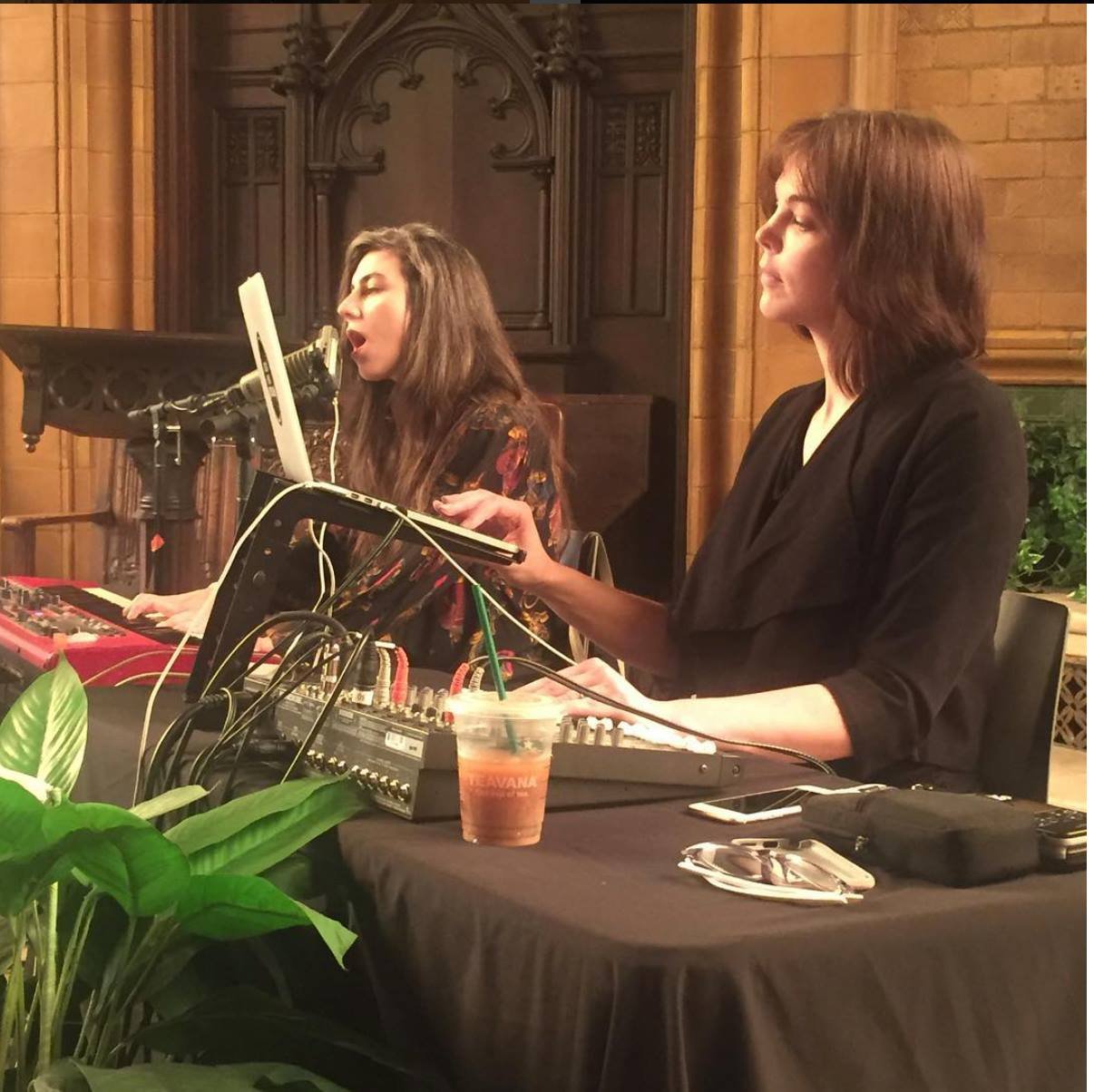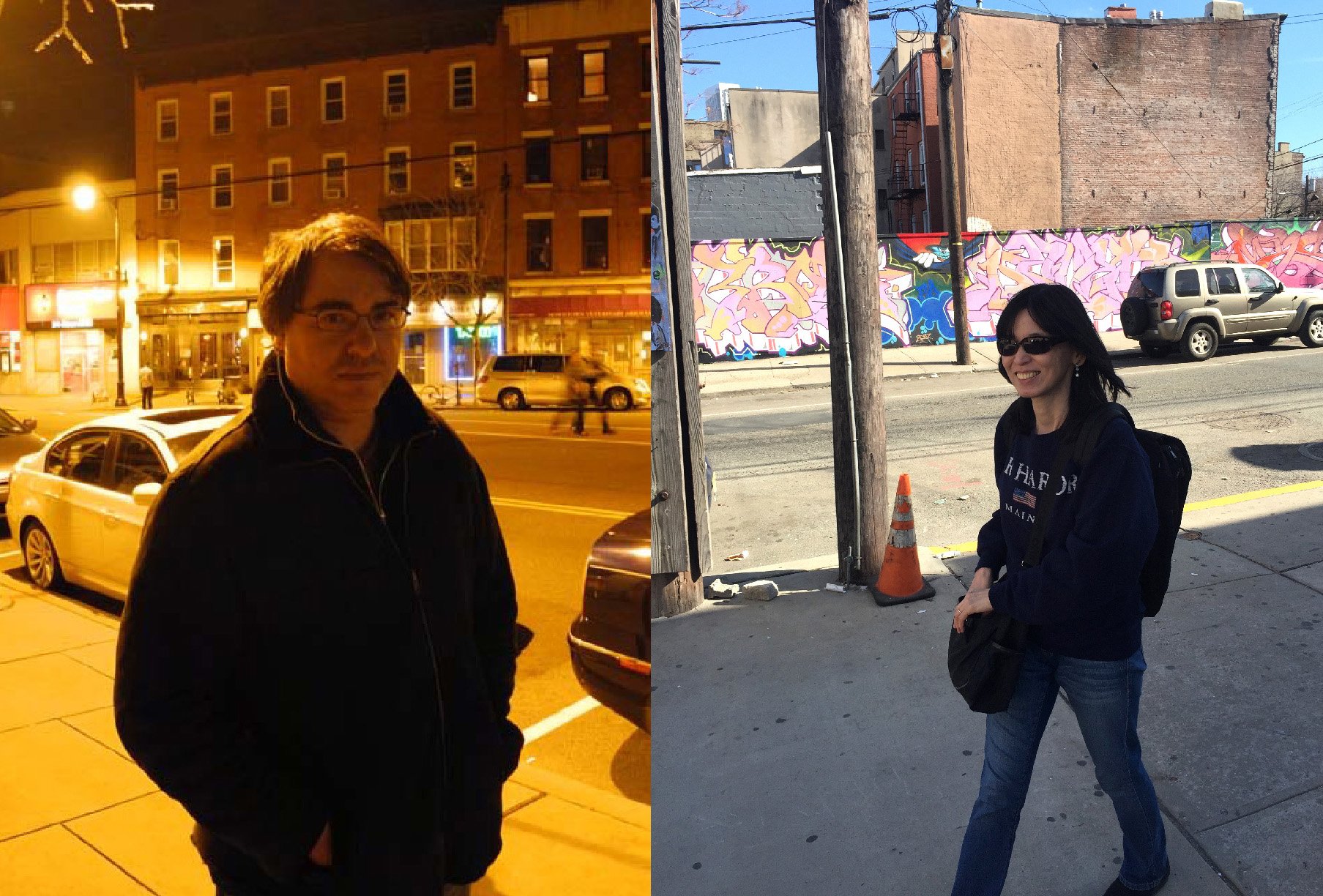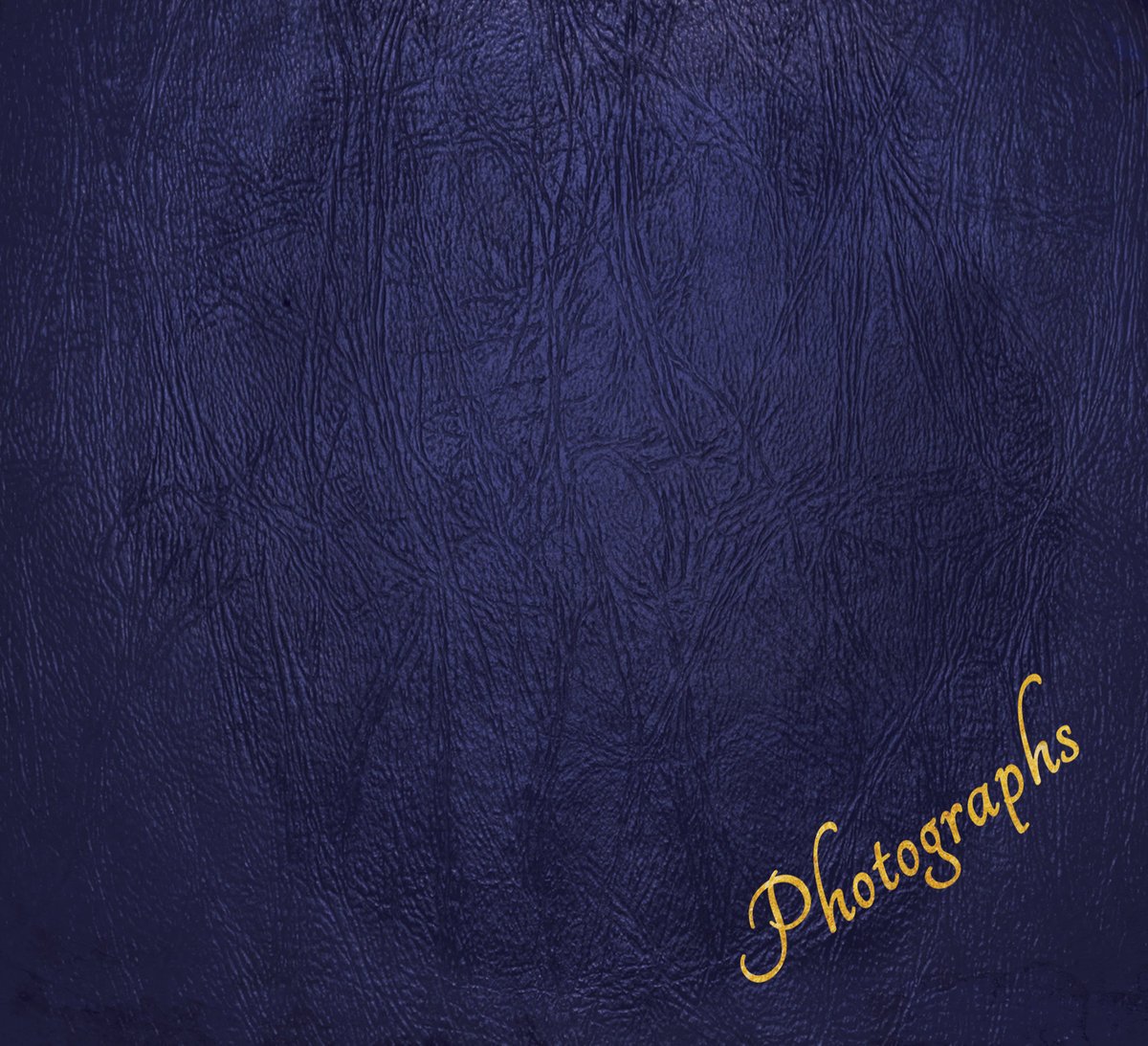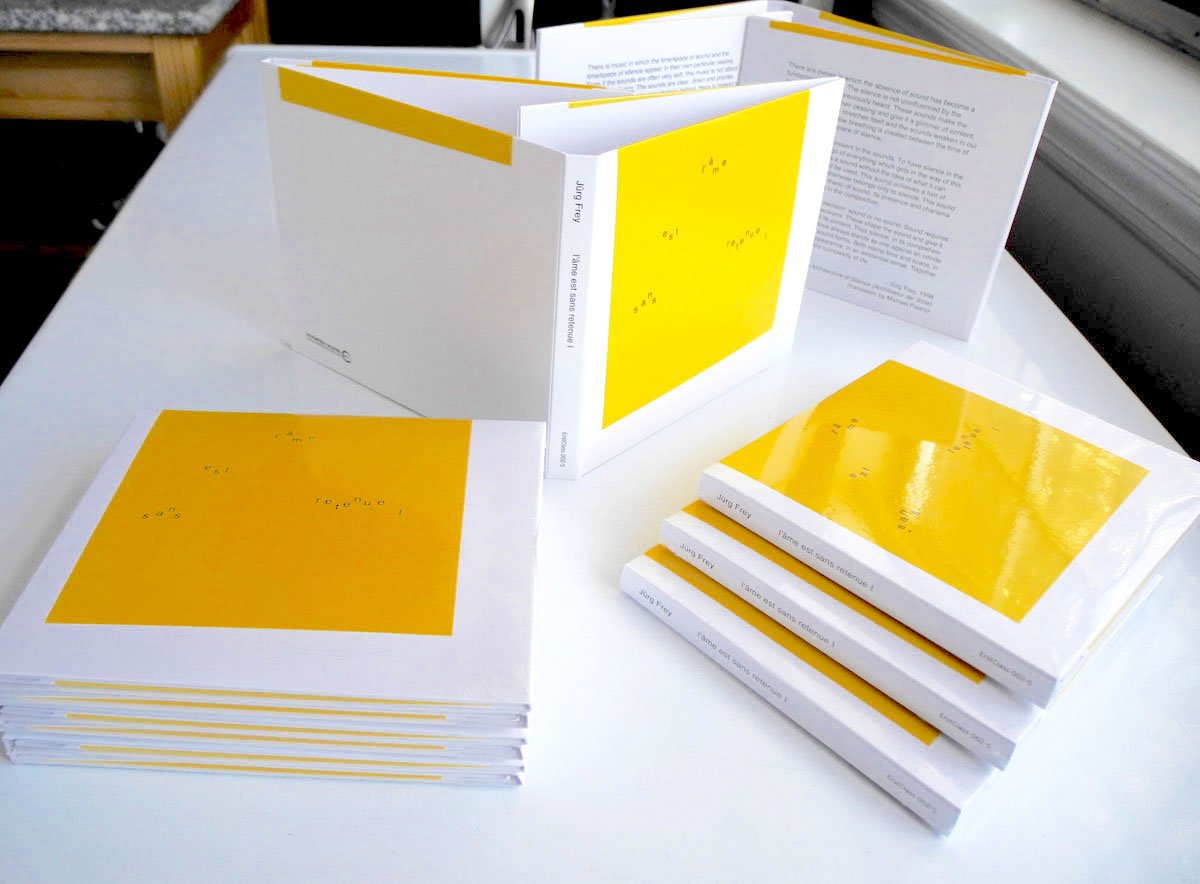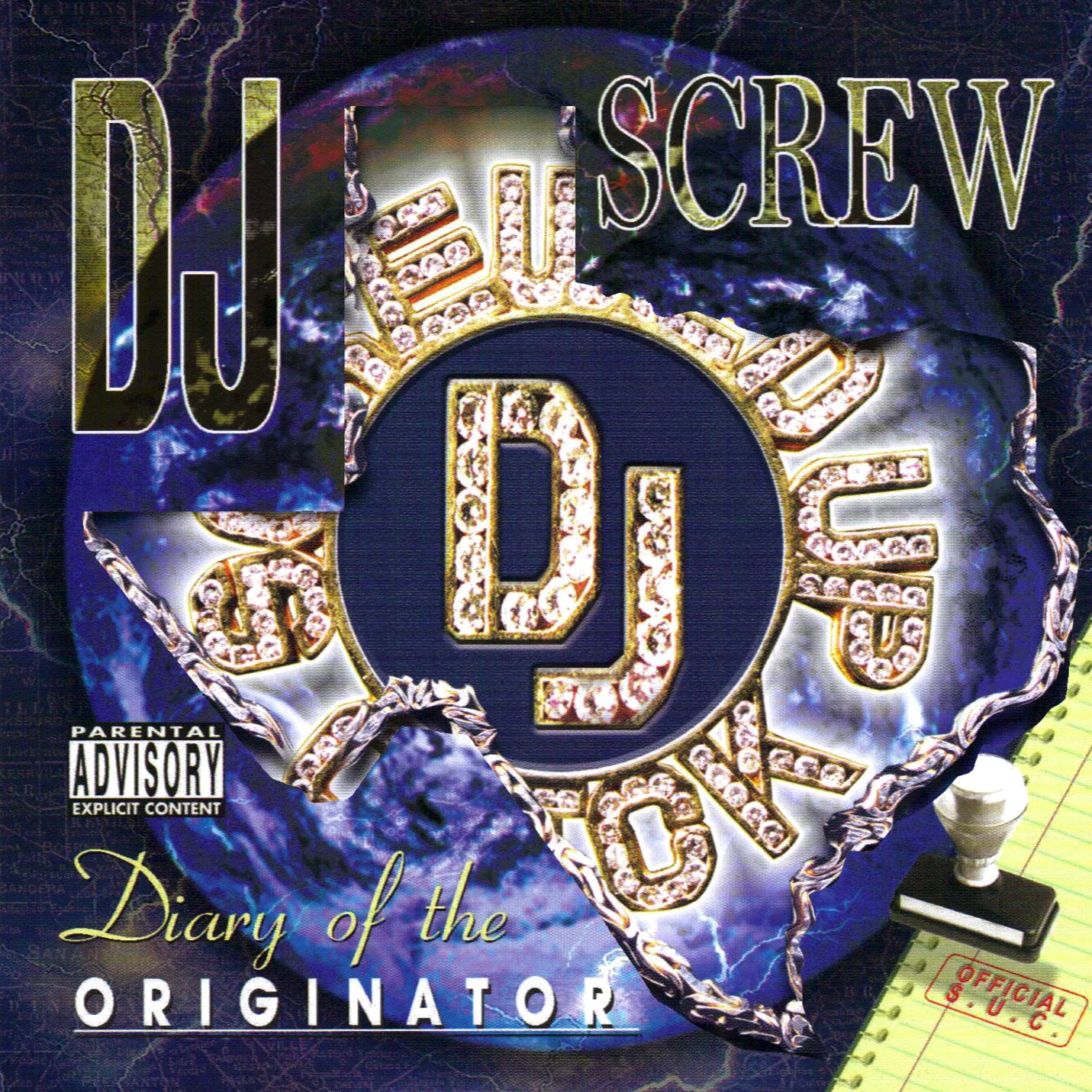This conversation happened via email the weeks of 11-18 December. It’s between myself, Jon Abbey and Yuko Zama, the husband-wife team behind Erstwhile Records and elsewhere music. Frankly, the former is my favorite label out there, responsible for publishing some of the most ambitious and evocative statements in improvised and collaged music, plus it has also been a joy to watch Yuko’s more recent imprint develop from the get-go.
I haven’t done too much to clean up the content of these exchanges. Jon and I have been shooting the shit a bit since 2021, and he fittingly keeps it pretty cas’ his side of the convo. I left slang and whatnot intact (clearly) but did capitalize the starts of his sentences—despite his lowercase preference being the correct one. Meanwhile, this was my first correspondence with Yuko, and she popped off with her responses; really went above and beyond.
Both sides were a blast and I wholeheartedly thank them for sharing their time and thoughts with me. Hopefully you dig the info and if you’re unfamiliar with the output of these labels, or even the types of music in which they specialize, you’ll lend the projects referenced here an ear. Even more hopefully, they’ll resonate with you.
Forever,
Austen
To Jon: Before we get into this year's releases, let's touch on Keith Rowe's Absence, as it was my favorite album of last year, and one that's moved me in a way few have. For those unaware, it documents Keith's final solo live performance in late 2015. So you'd been sitting on the recording for quite a while, the interim seeing studio works The Room Extended and 13 Thirteen (both masterpieces themselves). Essentially, I'd love to hear any thoughts you're willing to share, from the first time you heard the set, to when you and Keith decided it was time to share it.
Heh, actually I wasn't sitting on it at all; it turned around really fast after I heard it. I didn't know a set like that had happened, or that there was such a well-made recording of it (by Fabio Oehrli, Jürg Frey's recording engineer of choice, who happened to be doing the sound for the festival). In November 2020 I got a note from Keith with the backstory and audio attached, sent to me and Yuko and a few others, and I quickly decided to release it. Everything from the mastering to the design came together very fast; it was at the printing plant by May.
I have a unique perspective on Keith's live recordings, since I have seen him so many times live (over 100), but for me the reason this specific set had to come out once I knew of its existence was that here we had an actual recording of one of the great artists of the past half-century deciding to never play solo guitar live again, and we can hear exactly why he made that decision (even if to us it is a tiny glitch) in real time.
While we're talking about Keith, he also contributed two beautiful pieces to your 2020 AMPLIFY series, which, is it embarrassing to admit feeling a little nostalgia for that already? Would you like to conduct another remote festival sometime?
I get nostalgic for it sometimes too, but one of the main reasons I went so long with the 2020 one (six months, 240 pieces, 80 hours total of material) was to try to make sure future me would never be tempted to do another one. When I have done actual real-world festivals, they have been sporadic and each fairly unique, so I guess if I thought of a new and exciting way to do another online fest, then maybe it would be possible. But the plan since 2020 was that it would be a one-time thing. 80 hours (plus an hour of Taku's encore) is a ton of material; I doubt many people have really processed too much of that still, even though it's been two years since it ended.
To Jon: The first Erst of this year was Top, Lasse Marhaug and Jérôme Noetinger's tribute to the great Peter Rehberg. It was also accompanied by a text-based in memoriam section on your website. The album itself is fittingly glitchy, and I can particularly recommend the closing track, which goes in more of a transcendent ambient direction. Not really sure what to ask about Top or its context, as it's a sensitive issue, so I just want to give you the floor to say anything you want about its conception, makeup, and afterglow.
Glad to hear that connected with you—agreed that the final track is the highlight. I wrote a bit about this already at the link you gave above:
"when our friend and inspiration Peter Rehberg passed suddenly in July 2021, I felt like I had to do something, and what I’m good at is something Peter deeply loved, producing records. so I put together this project with some of his longtime collaborators and friends, Lasse and Jérôme, Marcus Schmickler mastering and Tina Frank designing.
it’s titled Top for multiple reasons but one is that Top was often Peter’s entire reply to a message you’d sent, both concise and supportive. a second is that it can also be read ‘To P’, we miss you buddy.”
Past that, I guess I'd just say that I'm very honored that Tina and Marcus and Jérôme and Lasse all agreed to work on this project with me. All of us knew and worked with Peter since the 90s, and I'm very proud of how it turned out. I wrote about Peter for his AMPLIFY piece in 2020 and that seems very relevant here:
"I mentioned in my Keith Rowe writeup how he always says that other people give you permission to do things, and in a way Vienna's Peter Rehberg more than anyone gave me (implicit) permission to start Erstwhile in 1998.
before that I was an obsessive listener and when Mego started to put out records in 1995, my mind was blown. this was the music of the future, this was exciting and raw and fun and genuinely experimental. it wasn't exactly what I wanted to do with my label (and why would I, when Mego was already doing it so well?), but it was inspiring, probably more of a direct influence on me than any other single label at the time."
Afterglow? I think we did him justice, although I can sense him somewhere being grumpy about it somehow, while quietly admitting to himself that we did a great job. :)
To Jon: We've been seeing a sort of new-school for concrete/collage music forefronted by artists like Claire Rousay and Vanessa Rossetto, and indeed Vanessa just dropped an absolute fucking epic in this field with The Actress. Especially considering that Erst began with more of a focus on in-the-moment improvisation, but has gone on to have seminal collage works like The Breadwinner and Teatro assente under its belt, what's been your feeling on this side of the music over the years and where do you think it's going?
Hmm, I guess I'd say that I think if you look at the history of jazz, into improvised music, into the areas I've worked in, the underlying tendency has always been towards more freedom. Free jazz in the 60s had more freedom than what came before, European free improv had more freedom than any jazz, and the areas Erst has documented (I'm intentionally not using any genre names) have continued to expand that freedom. Where are we going, today? I think people will continue to explore and expand the boundaries of organized sound, and it's exciting to me to see younger generations of artists like Vanessa and Claire continue to push forward into self-expression.
The Actress also happened to be the only two-disc set this year, but you're really no stranger to those, or even huge 4-5 disc boxsets. For all intents and purposes, I don't know the first thing about running a record label, but it seems many labels discourage larger physical releases; presumably they are trickier when it comes to design, manufacturing, etc. Generally speaking, how soon do you know when a project is gonna go long?—In fact, you announced Wovenland 3 as a triple CD and it seems production for that one is just getting underway. At any rate, you seem keen in these instances.
Yeah, I've always been a fan of lengthy releases; all else being equal, in film too (Twin Peaks: The Return and Berlin Alexanderplatz to name two quickly). In fact, I don't think I officially announced this anywhere, but I decided last year that any and all future ErstSolos will be multiple discs, as to me those are generally much stronger statements if executed well. Keith Rowe once told me he had two basic types of live sets: a 20-minute one in which he explored a single idea deeply, and a 60-minute one, which was much more complex. My interest is definitely towards the latter.
So there aren't like logistical setbacks when it comes to manufacturing these larger sets, like longer wait times and shit? Then again that's probably a reason you don't dabble in vinyl.
Ooh, don't get me started on vinyl. I disliked it as a kid growing up when it was basically the only choice. I would buy LPs, record them to a cassette, and never play the LPs again. Then CDs happened and I thought vinyl was thankfully gone, but as we all know, like the killer in a horror film, it has come back to life and made everyone around miserable. LPs are pricier, harder to store, harder to pack, harder to carry to the post office, pricier to ship, way way way more likely to be printed incorrectly, only hold 20 or so minutes of music on a side, on and on. I did one LP (The Magic ID) at the musician's request, and was pretty happy with how it came out, but I hope/plan to never do another one again.
And no, multi-CD sets print just as fast as single CD ones, 3-4 weeks currently. Compare that to however long vinyl is taking these days (I said not to get me started, heh).
On a similar note, you don't really do streaming either, even since joining Bandcamp in 2017. Instead you preview a track or two and, maybe with the exception of ErstPop, it's an understandable practice. Your interest in releasing holistic experiences is definitely plain to see, but I'm more or less inviting you to go off here too haha.
OK, there are a few things here. Streaming services never made sense to me from day one, as a label or as a listener. I encourage people who don't have the money to buy Ersts and are curious to instead DL them illegally; I am fine with that, although I also like to add that any and all financial support is much appreciated and if we don't get enough, our labels will stop.
Also I've always been someone who prefers to experience an artwork as a whole. I have always tried to avoid film previews of any films I already know I'm interested in, and often I don't even know who is in them beforehand and end up surprised to see specific actors onscreen. With Erst, there are often tracks or components of tracks that I prefer people to hear in context of the whole record. I usually put up sample tracks because people really want that, but probably if it were up to me completely, I would do that even less. I definitely strongly believe in albums as a holistic experience as you say. The structure and shaping of Ersts is usually crucial IMO and that is, of course, lost out of context.
To Jon: Ryoko Akama and Clara de Asís effectively put a bow on your 2022 output with sisbiosis. It's funny, I've been going back to this one maybe the most of the three, mostly due to a since-deleted RYM review describing it as a Christian concept album—the page still bears the "spiritual" and "religious" descriptors. Frankly I wish I could get more onboard with that reading of it haha. Still, this kind of illustrates in a heartening way the open-endedness of this music (not to imply it’s just an inkblot or whatever). Does anything spring to mind as far as interpretations of Erst records that gave you pause, be it out of bafflement or helping you see the work in a new light?
That's an interesting question, hmm. My preference my whole life when it comes to music, or film, or TV, or books is that I want to know as little as possible about something before experiencing it for myself. All I want to know is whether I'm interested in tackling it or not. I have done my best to leave this possibility open for Erst fans whenever possible, but the flip side is that if you don't help shape people's perspective with a press release, sometimes you get perspectives that can seem to me wildly off-base. That's OK though, I prefer that to the alternative, again going back to the ‘freedom’ I mentioned above, but in this case for the listener.
But to more specifically answer your question, I can't think of anything like that. I do sometimes turn around Ersts very quickly, so that I'm processing them basically around the same time as listeners, but I think I tend to have my own pretty strong perspective on each one, and while other perspectives certainly make me think and reconsider, I can't think of any that really strongly changed my existing perspective.
To Yuko: In your RYM interview a few years back, you discussed some of your designs for elsewhere, Erstwhile, and Gravity Wave over the years, including the cover of The Earth and the Sky, which really is a banger. Thinking of albums that sound like their art, that’s one my mind goes to immediately, and it’s something you have a knack for. One of my favorite covers this year has to be sisbiosis’; can we please talk about this design?
I am glad that you feel my album cover for The Earth and the Sky echoes with the music. That is the happiest compliment to me.
As for the cover of Clara de Asís / Ryoko Akama’s sisbiosis, Clara and Ryoko sent us the photographs that they took at the site of their field recordings near the border of Switzerland and France. Interesting thing was that their photos were taken from very different, unique perspectives of their own even though they were walking in the same area together (BTW, Clara took black and white photos, while Ryoko took color photos). It echoed with their collaboration in which they put together their field recordings and other sounds which were created from two very different perspectives, to make one interesting world. I think such different perspectives gave unique dimensions and depths to their resulting pieces, and I wanted to reflect it in the cover art. So, I put one of Ryoko’s cropped color photos over Clara’s black and white photo, to create a sense that two distinctively different images comprise one united scene, merging with each other naturally yet with a mysterious sense of two different worlds existing simultaneously (like an entrance to another world opens in the middle of a nature scene). It was Jon’s idea to make the edges of the inserted (Ryoko’s) photo jagged, which was brilliant in giving this cover a natural unity just like the duo’s work.
As you can see in this cover and also many of the recent elsewhere covers, I like to feature the musicians’ own artworks or photographs if there are good materials, to create affinity between the cover art and their music as closely as possible.
To Yuko: While I was trying to formulate this question, it was trippy to realize that elsewhere will be celebrating its 5th anniversary in just a couple of months. Unlike Erst, I've been aware of your label since its creation and maybe as a result it feels so much more recent haha. Still, as someone with little to no idea about this stuff, I'd love your perspective on the process of starting up a label, particularly how things might've changed since the founding of Erstwhile in the late 90s.
I started working for Erstwhile Records in 2002 soon after I met Jon, first as a photographer, then as a designer and co-producer. Around the time, I was fascinated with the fearless experimental spirits of the Erstwhile musicians and their contemporary, unique ways of approaching sounds. I also enjoyed every part of the CD production process I was involved in: as a photographer, a designer, or a co-producer, from the very initial planning stages to the last stage of sending out the orders of physical CDs to our customers.
To me, it has been (and is still) very exciting to discover some music created by Erstwhile artists, but over the years of working on the label, I have more and more developed my own taste for music—more toward classical music that I felt deeply connected to personally. Classical music has always been in my deepest roots since my early days when I was immersed in playing the piano and singing choral music, even subconsciously when I was into some other genres of music in later days. But it had never been linked to my interest in experimental music until I discovered the Wandelweiser composers’ works around 2010, which was an eye-opening experience for me, and I felt I found a missing thread that could connect my love for both experimental music and classical music.
Soon after that, Jon and I launched the Gravity Wave label with Michael Pisaro (now Michael Pisaro-Liu) in 2010, to put out a series of his recent prolific works. Working with Michael has been great, since he has an extraordinarily sensitive ear for both experimental music and classical music, while having an adventurous spirit. I was thrilled with working on something that I felt deeply connected to, often being able to echo my own aesthetics on the projects more closely than on Erstwhile’s projects. It was like a half step closer to the excitement of having my own label.
The actual trigger for me to consider starting my own label was back in 2016 when Jon and I launched a new imprint named ErstClass, to feature contemporary classical composers’ works that contain experimental edges. We have released Michael Pisaro / Reinier van Houdt’s 3CD The Earth and the Sky (2016), and Jürg Frey’s 5CD L’âme est sans retenue I (2017), both of which I worked as a lead producer on, and were two of the most exciting Erstwhile projects I had ever been involved with. I felt deeply and personally connected to these and wanted to pursue this contemporary classical music direction more intensely on our label. But ErstClass was not really the main focus of Jon, so I was getting a little frustrated with the situation, especially since I myself was more and more into contemporary classical music than experimental/electro-acoustic music.
The idea of launching ‘elsewhere’ came into shape in 2018 when we received a release proposal from David Sylvian for three live recordings of Biliana Voutchkova / Michael Thieke’s Blurred Music, who hoped we might be interested in putting it out on Erstwhile. I loved the recordings, but it was not really the kind of music Jon would pursue on Erstwhile, so after a week-long discussion with Jon about the possibility of the release, he came up with an idea that perhaps I should start my own label to put it out if it was really important to me. I was excited with the idea and came up with the label name “elsewhere” immediately (my long-time blog since 1998 is named view from elsewhere), making the red logo design overnight. It was so thrilling for me to have a label where I have the freedom to pursue my own decision making. David was also very happy about the idea of me starting my own label, and helped me in many aspects from shaping the initial concept of the label to the engineering advice as an experienced label owner/engineer himself. So, I deeply thank Jon and David for encouraging me to start my own label then.
To me, the most crucial thing in running a label is to be able to love the music you work with to the core without any hesitation, as if you were living with it. It requires an extremely deep and focused commitment to release an artist’s work on my label, and it would be impossible to do so without the enthusiasm to love the work deeply and for a long time.
To Yuko: Elsewhere is certainly a classical label for the most part—especially a lot of minimalist pianoscapes to explore. But it can be pretty eclectic in its own right, the biggest left turn to date being the Giving Shapes album, which has sort of an indie folk thing going on. This is partly to say I’m onboard for more ElsePop if that’s in the cards! But I also want to open the floor for your thoughts when it comes to curating a label.
Classical piano music appeals most to me, partly since I used to love playing the piano myself, but for the first year or so after I launched the label, I was still in a trial-and-error state regarding the label’s direction, and I was thinking of being flexible and featuring a variety of music regardless of genre. It was then I received a demo of The Giving Shapes and was very personally attracted to their music. I liked that the duo was classically trained, felt there was an unshakable power and sincerity in the music created by devoted musicians, and especially felt a resonance in their voices that made me feel a deeper world than just pop music. I listened to their pieces over and over again to the point that I was immersed in the music completely, so that was why I decided to put it out on my label. I still enjoy listening to this album.
But this was rather a rare exception, and as for my future plans, pop-oriented music is unfortunately not going to be featured on my label. The main reason is that pop-oriented/influenced artists tend to put priority on streaming distribution like Spotify, which is something that goes against my label’s policy. There was a time when I was also interested in the possibilities of streaming distribution, believing that it would help musicians’ visibility, and I had put my label’s releases on streaming services for a time. But I soon realized that for a small label like ours it was a mistake that killed CD and digital sales, so I withdrew most of my label’s works from streaming platforms after several months.
Another thing I don’t like about pop-oriented/influenced music is the tendency to use overly heavy compression in mastering, perhaps to make their presence stand out in streaming or on the radio. I especially dislike the pressure of compression that ruins the spaciousness, subtleties, and wide dynamic range of the music. Also, most listeners of pop-oriented/influenced works seem to be satisfied with listening to music on streaming instead of buying CDs/digitals. I would rather release my label’s work for listeners who are more serious about music listening, perhaps with a good sound system to appreciate the subtleties that we pursue on each of our productions. We put a great deal of care and attention into each CD we produce, and I don’t like the idea of these creative works being consumed by easy streaming with questionable sound quality and business models.
I understand that being on streaming platforms is often crucial for musicians to get visibility, especially if they pursue grants and event performance opportunities (since many organizers only listen to Spotify to decide which artist they would choose). But as a small label owner, I stand in a different position and have to protect my label’s business. And if I were to work with artists who want to be on streaming, no matter how deeply I love their music, this conflict regarding the streaming issue would be inevitable. I would like to avoid such conflicts as much as possible since running a label by myself requires a lot of energy and concentration itself. So, I may still find some pop-oriented/influenced music fascinating for my personal listening, but there will be no chance to have ElsePop in the future (sorry if I crushed your expectations...)
Another elsewhere surprise, and a personal fave, was Shira Legmann playing Scelsi—some of his piano compositions, which don't get nearly as much shine as his orchestral stuff. You even conducted your own interview with Shira, which gives some nice insight into the project. I'd like to mirror your closing question for her: Who are some composers, contemporaneous to Scelsi or perhaps even earlier, that you'd love to have on elsewhere as well? What would you be looking for in renditions of these older works?
My label basically aims to feature works by living composers of the same era, so I normally do not plan to include works by composers of the 20th century or earlier.
However, the Scelsi album by Shira Legmann was an exception. I chose to feature it on my label because of the freshness and originality of Shira’s interpretation, as well as the universality of Scelsi’s piano music. Since I worked with Shira on Michael Pisaro’s Barricades (2019), I was fascinated with her piano sounds which contain a distinct cleanness and a modest elegance, with a subtle touch of a mysterious air. When she played Bach on her self-released album, it sounded clean and pliable yet solid and compelling, not either overly expressive or cold as I felt in many Bach piano recordings. This neutral balance was quite impressive to me. I also love the organic flow of her piano performances. She knows how to let the music breathe without forcing.
As for Scelsi’s music, I was fascinated with that, “there is the freedom he allowed for the pianist in shaping them,” as Shira once mentioned in our interview. There are also some memorable, almost striking moments that contain ‘silence’ between or in the sounds of Scelsi’s music, which is a similar profundity I find in some of the Wandelweiser composers’ works. I remember such a moment when I was listening to Scelsi’s cello piece Triphon I-II (1956) that Seth Parker Woods played at his NYC concert in 2018, too, when a certain length of silence in the middle of the music struck me with unexpected profoundness—as if a vertical depth opened up all of sudden in the middle of the stage. It felt as if the old cello pieces were coming back to life in our time, staring at us vibrantly. I think this compelling power of the silence is something that Scelsi’s music has as its unique nature, and with Shira’s interpretation in which she imbued her own musical voice, his piano pieces felt so much more contemporary and refreshing than what I would have expected from music of the last century.
So, Shira’s Scelsi album was a very rare project for my label. For my future projects, I would be more interested in featuring contemporary composers of our time, and so far, I have no particular composers from Scelsi’s time or earlier in my mind.
To Yuko: Two of the most frequent faces on elsewhere are Jürg Frey and Reinier van Houdt. The reader might know the latter best as the pianist of Current 93. And these two join forces on your latest release lieues d'ombres, which is an exceptional collection of piano music. Admittedly, I can kind of be down on "interpretation," but, like, the quote from Frey at the top of the liner notes is so true. Reinier plays as if he wrote or is improvising the things himself; even got that vibe from The Earth and the Sky. Anything to say about this duo, between the music and the process of collaborating with them, that hasn't been said already?
Reinier is a pianist who, when playing the works of any composer, is able to disappear his self and become a transparent medium, assimilating and immersing himself into the composer’s mind completely. I found this exceptional quality of him as a pianist when I listened to his live performance of Michael Pisaro’s fields have ears (1) in NYC in 2014. It was amazing, as if I were hearing Michael’s inner voice via Reinier’s piano clearly and precisely.
Reinier and Jürg worked together in 2019-2020 for their first collaboration CD project on elsewhere—for Jürg’s two-piano album l'air, l'instant - deux pianos with Dante Boon as the second pianist. Both Reinier and Dante played Jürg’s pieces beautifully, but I was particularly impressed with how Reinier immersed himself in these Frey pieces, disappearing his self and becoming a transparent medium as he did on Pisaro pieces.
Reinier himself has been deeply into Jürg’s piano music even before the project happened, so it inspired me for the idea of making a triple album of Jürg’s piano pieces interpreted by Reinier, believing that it would be something incredible, like The Earth and the Sky is. We three worked closely from the very initial stage of planning the recording, deciding which pieces to include on the triple CD (suggested by Jürg), to the final cover design. Working with Jürg and Reinier has been amazing; we all hear the music in a very similar way and we all pursue the same level of subtleties, aiming at the same goal. I share such a rare affinity with these two musicians via our close communications that I often feel as if I were talking to myself, even though our native languages are all different. I haven’t officially announced this yet, but we are planning to make another triple album of Jürg’s other (newer) piano pieces as a sequel to lieues d’ombres in the future. We are very excited about the plan.
I understand that “interpretation” is something that makes music interesting and refreshing, sometimes with an unexpectedly innovative approach that the composer may never imagine. But for me, the composition, or the composer’s intention, is most important and appealing, especially if the composer is alive. One thing I am particularly aiming to fulfill on my label is to release my favorite composers’ works with the best possible realization that feels closest to the composers’ minds. In this sense, I think Reinier is an ideal pianist who can convey the composer’s original intention in the purest possible form, without any ego involved. Amazingly, Reinier is able to transform himself in many different ways depending on the project, like in Current 93 or in his own compositions such as his drift nowhere past / the adventure of sleep. He is certainly one of the most interesting artists currently for me.
To Jon: Now let's take a moment and throw it back to almost 10 years ago. Whose fault is it for putting "Abuse" on The Abyss? That shit jumpscared me in 2014 and I'm still low-key pissed it's there. It was fucking Kevin right? Or was it Jason—Air Supply has a jumpscare too!
Taking the piss there (mostly), but I actually am curious if there have been ideas on Erst albums you've wanted to or have vetoed. What's your approach when it comes to being hands-on-or-off with an album's conception and contents?
It really depends on the record; some I leave entirely untouched from how I receive them, some I move around (with the musician's approval, of course) drastically. If you want to ask me about specific records here, happy to go into details. The two you mention here I did not have much to do with assembling—The Abyss not at all and Air Supply a bit.
Seems like a good opportunity to spotlight two of my favorite releases last decade, both of which came via Erst in 2018: Where Are We Going, Today and My Trust in You. Both also overlooked IMO and, of course, wildly different from one another, with the extreme rawness and minimalism of the former, and the latter potentially being a great, relatively accessible gateway to the more collage and drone-oriented stuff (while still having a mystique about it). Curious to hear how your involvement differs between records like these, especially as a while back you said something about having a hand in Trust in particular.
Oh, these are two great examples to illustrate my varied approaches to producing. Both duos came about at my instigation. Christian [Wolff] and Antoine [Beuger] of course knew each other but had never collaborated like this, and Lucio [Capece] and Marc [Baron] somehow did not know each other really. WAWGT came together very quickly after my invitation (side note: it is catalog number 083 and was recorded when Christian was 83) and I thought it was perfect as is. All it needed was a bit of mixing/mastering from the invaluable Taku Unami.
MTIY was one that I reworked quite a bit, reordering tracks, dropping tracks, cutting sections, and I was thrilled when the musicians were both very happy with my efforts. I think the main creative job of a producer (once the project is going) is to best showcase the specific aesthetic of that project, and sometimes my outside perspective (not being one of the performers) can help with that.
Yuko was asked a similar question about her role as a producer:
My involvement as a producer will vary depending on the project, but basically I trust and respect the approaches of the musicians whom I choose to work with, and leave the creative decisions to them after commencing a project. My job is to realize via close communications with the artist what they aim for in as ideal a form as the CD medium allows.
Sometimes if musicians agree (or prefer), I initiate the mixing and/or mastering process with my label’s engineer Taku Unami. But my purpose in such cases is always to bring out the essence of each piece in the most natural and simplest way without ruining the essential beauty of (or the ‘life’ each musician gave to) the piece.
Occasionally, if I feel that the already mixed or mastered piece does not convey the most important essence of the music, especially if overuse of compression or other effects seems to have ruined the spacious feel of the original recording (when it is crucial to the piece) or smashed the dynamic range, I will decide to redo the process with my engineer to make it sound more natural, using less or no compression/artificial EQs and so on—but only if the artist agrees with my suggestions. In such a process, I take initiative but not in the way that goes against the artist’s intent. We would make different versions of the mix or master to let the artist listen and compare, until we find the best version that everyone is happy with. I barely have a conflict with my label’s musicians about creative decisions, since I wouldn’t decide to work with artists who have fundamentally different aesthetics from the start. As someone who has strong likes and dislikes, it is important for me to choose to work with artists whose aesthetic values resonate with mine deeply, or we would face serious conflicts in both music and design.
In the early years after starting my label, I sometimes wondered if I should also include music with a wide range of aesthetics other than my own tastes, to give a variety to my label’s catalog. But there are limits to what I can do on my own as a solo label curator, and it is a lot of work to do for one project once I am committed to (which would be impossible unless I truly love that work), so I decided to only include works that resonate with me. It may narrow down the range of my label’s catalog to my own taste, but I would prefer that way rather than pursuing variety just for the sake of it. I would like to put out the music that I would want to listen to repeatedly later, and would not be happy if I put out something that I don’t want to listen to or see again.
To Jon: You’ve both just mentioned Taku Unami, who's got an ErstSolo project coming up. Can you give a little backstory for your friendship / working relationship with Taku, how he effectively came to be Erstwhile's in-house mastering engineer?
Yeah, Taku is a crucial and essential part of Erstwhile. There are of course other great mastering engineers, but we work so well with Taku that in recent years he does almost all our releases. Taku was not yet really part of the scene when I did my first fest in Tokyo in 2002, but I quickly became aware of his hibari imprint and his own work, then met him during my next visit to Tokyo in 2003. He recorded the AMPLIFY there in 2008 (as well as the Rowe / Sachiko 2CD we recorded that same week) and a big chunk of the AMPLIFY in NYC in 2011, and since around 2015-2016 we started sending him almost everything. Of course he has also done his own remarkable string of releases for Erst, and in the last few years, he has gone to Seoul to record Hole in My Head and will go back next year to do the Choi Joonyong / Devin DiSanto. For me it's important that a mastering engineer keeps their own taste out of their mastering work and works within whatever aesthetic that specific project requires, and Taku is fantastic at this—both his ability to quickly grasp whatever the aesthetic may be, and working within that, not his own personal preferences. we are both very close with him and I consider him a major part of Erstwhile's recent years, as I said above. Thank you, Taku!!!
To Jon: We've spoken a little about unrealized Erstwhile projects, especially around the label's naissance, and I get the sense in most cases you feel it's been for the best. But are there any that you feel "got away"? With a label as collaborative (often internationally) as Erstwhile, it's easy to imagine not every dream team panning out, at least for the time being. And not to force you into a casting call or fanfic scenario, but is there a pairing you'd love to see happen?
Hmm, let's see. The first one to come to mind that I wish had worked out is Olivia Block / Julia Holter. We talked about it periodically for years and finally they did a residency together in Chicago, but the recording project never happened. A pairing I'd love to see happen? I will go with Linton Kwesi Johnson (whose last real record was in 1999) with music by Steve Beresford. I have contemplated seriously pursuing this for years but never have. (If you see this, LKJ, you are a brilliant genius and it would be an honor to work with you, so hit me up!)
While we’re at it, are there some deep cuts in the label's backcatalog you'd like to shine a light on as well? Will quickly shout-out Stangl and Kurzmann's Schnee, which you recommended after I mentioned Sans Soleil being my favorite movie [that or INLAND EMPIRE].
It's hard to know what “deep cuts” means in this age of infinite accessibility; maybe Siewert / Brandlmayr's Too Beautiful to Burn since it's been OOP for many years? This one turned out incredibly, like a dub version of their Radian and Trapist projects, and is brilliantly recorded by the great Christoph Amann, one of the 18 or 19 Ersts he recorded.
To Jon: Abstract music gets a bad rap, never beating the "pretentious" allegations for some. And it's funny 'cause that word couldn't be further from applying to you, and presumably most (if not all) of the artists you work with. At the end of the day, a lot of people just have a hard time connecting with this stuff, so it begs the question, what was the trajectory of your own music taste? How did your passion reach the point of beginning Erstwhile?
Actually my own journey as a listener was a lot like the one I described above when discussing ‘freedom.’ I was always a crazy music lover from my youth, but back then, access to more experimental music was much more difficult. In college, I was lucky to have a friend with both a Trouser Press record guide and a massive vinyl collection with many of the records discussed within, and that helped a lot. I saw Sun Ra when I was 19 in Central Park (the very first Summerstage concert ever) from the foot of the stage, and I have described that many times as life-changing. I continued to explore into areas I found interesting, all of jazz history and then all of free improv history, and luckily when I was starting Erst in 1998, the electroacoustic improv scene was also starting to slowly burble up around the world, and I found that a deeply exciting area of exploration and did what I could to keep it exciting and new. “Come aboard! We're expecting you!”
Can you talk a bit about this burgeoning EAI scene; what were some of your first exposures to it?
Sure, I remember Christian Marclay was a big influence early on, and seeing his duo with Günter Müller here at the Swiss Institute as well as a rare NYC AMM performance (both in 1993-94; the AMM one is not one of their better sets but is documented on disc three of Laminal) were the first two EAI sets I saw live. The AMM set was also the first time I was in the same room as Keith Rowe (whom I have seen perform more than 100 times since). Really crazy to think that I am older now than he was then.
As for recordings, in the mid-90s, Amoebic (run by Sachiko M), For 4 Ears (run by Günter Müller), Random Acoustics (run by Georg Gräwe), Durian (run by Werner Dafeldecker) were all emerging, documenting this new area that artists were working in, and I found all of that incredibly exciting. My initial list of potential projects to do on Erst when I started in 1998 was much more far-ranging and less focused in terms of genre (obscure Krautrock reissues, Bill Dixon / Tony Oxley duos, Keiji Haino, Omit, etc.) but increasingly I gravitated towards this one worldwide area and I think that worked out well for everyone.
Was your family really into music too? But I dunno, it seems some souls just like gravitate on their own to the freedom in music you're talking about.
My dad Albert (RIP) loved classical music and bop-oriented jazz—the farthest out he ever got was probably Ahmad Jamal. Interestingly, after he died in 2001, Yuko took a lot of his classical CDs and I think those helped her on her journey towards elsewhere. For me, I think music was just something I connected to early on and then I just kept exploring; my taste never really overlapped with my dad's almost at all.
To Yuko: When L’âme est sans retenue I dropped, I saw the write-up you did for it and was like, "what is there even left to say?" In everything of yours I've read, your words come off so thoughtful and passionate. How did you come to love music, especially of this ilk, to the point of heading your own label (and obviously being deeply involved w/ Erstwhile)? Any advice to give someone who struggles to connect with abstract/experimental music?
I think my attraction to this kind of minimal contemporary music is deeply rooted in my experience of seeing Donald Judd’s artwork Untitled (Stack) in a magazine when I was in my 20s. I grew up in Tokyo, where things were crammed into small spaces with little consideration for the harmony of colors and shapes, and the streets were filled with loud noises and commercial music as if trying to fill the void of silence. Such a chaotic, distracting environment often depressed me both visually and sonically. (I felt so relieved when I saw the orderly, numbered streets of Manhattan for the first time.) I love Japan, but I have such mixed feelings. And when I saw Judd’s artwork in the magazine, I thought I had finally found the space I was longing for, where I could breathe, away from the chaotic reality surrounding me. Whenever I was stressed out or depressed, I stared at the blank space in Judd’s artwork and felt it like an oasis for me. It seemed to be a space of nothingness, physically empty, yet some intense drawing power and endless possibilities invisibly exist between things, and that ‘space’ brought me a tremendous comfort and excitement.
Discovering the Wandelweiser composers’ music in my later years (around 2010) was a similar experience to that, as the ‘silences’ in/between the sounds fascinated me for the same reason, especially in Jürg Frey’s music.
It was, by the way, surprising to know that you read my long essay of Jürg’s L’âme est sans retenue I. I thought no one would want to read through such a long text except me. I wrote the essay inspired by the ‘silences’ in this six-hour-long piece, which struck me as a similarly intense power and mesmerizing world as I found in Judd’s artwork. Those silences between the groups of sounds are inaudible and seem to be empty, but they could trigger to unfold a profound world in the listener’s inner self. For me, these silences conjured up some interesting connections between this Frey piece and some visual artists’ works, as I mentioned in my essay. I think Jürg’s work has such a discreet yet strong power to activate the listener’s creative mind in that way.
Perhaps it is the opposite of the situation in which the music is composed to the last detail—where the composer’s intentions are clearly presented in each note and every development of the piece, and the audience listens passively to the music. The audience there listens to music with the goal of understanding and appreciating what the composer presented. In Frey’s work, however, the composer presents the entrance or translucent form of the music often with substantial silence (spaces), and such ‘openness’ allows the listeners to hear the music in their own way, echoing it in their own minds. It stimulates the listener’s creativity and triggers something to be born within them. The reason I love Frey’s work and the work of the artists on my label is because I can breathe freely in the ‘space’ within such music. I love old classical music, too, and as a passive listener I love to immerse myself in music created by great composers of the past. But that is for my personal music listening, and as for the works of artists that I want to feature on my label, I focus on works that have such ‘space’ or ‘openness.’
However, my way of listening to music and my attraction to music may not be very common. Some of my friends dislike minimal art, abstract art, contemporary music and experimental music. I don’t mind that. If you feel uncomfortable with this kind of music, there is no need to force yourself to listen to it, and I think it is most important to listen to the music you are drawn to now. I was not attracted to experimental or contemporary music at all until I was in my mid-30s, but my musical tastes changed with experience, and here I am today. So my advice is to listen to music that makes you happy and allows you to breathe freely. If you are attracted to that music, then it is what you need right now, and over time, as you change, your musical tastes may change as well.
To Jon: I googled how well-known it is that you're a Screwhead, and pretty much the only result I got was this list purporting to be your favorite tapes. Couldn't find it on The Wire's site; it's legit though? I think The Wire or this guy might've accidentally put 11 instead of 1 for Endonesia.
Ha, yes, I have been a huge DJ Screw fan since first encountering his work. I find his work ethic inspiring and the results very consistently strong, often great. The Wire asked me to make a list for them of whatever I wanted in 2020, and I thought about it for a bit, and decided that if I listed Erst-connected artists/projects, I would end up irritating whoever I had to leave off, so since I will take any chance to champion Screw, I did that. The list isn't in any order; those are my picks out of hundreds of releases and those IMO are the crème de la screw.
